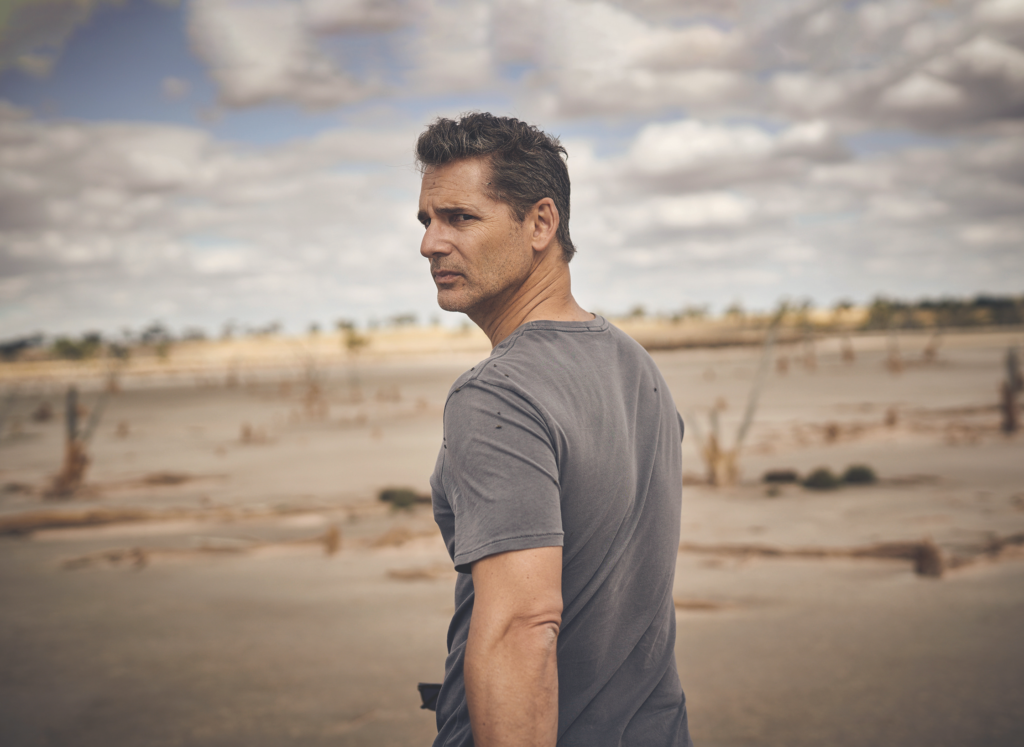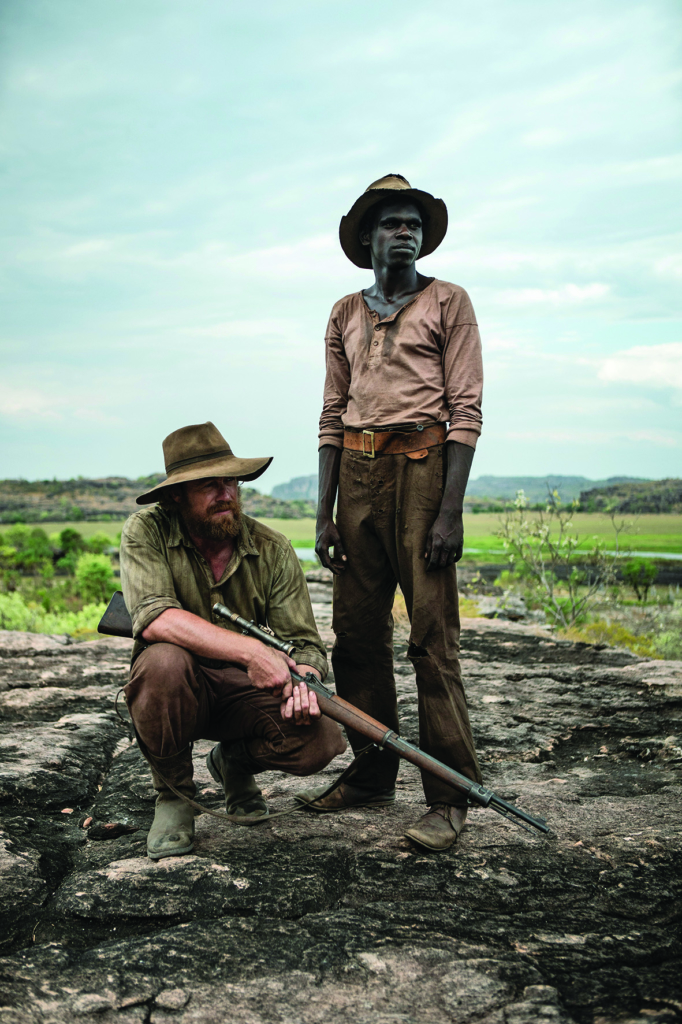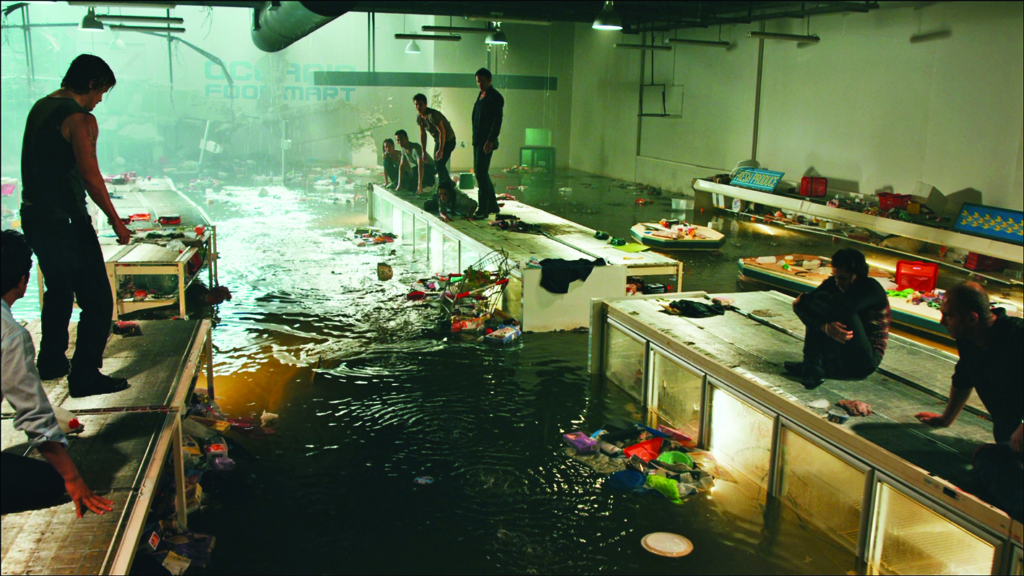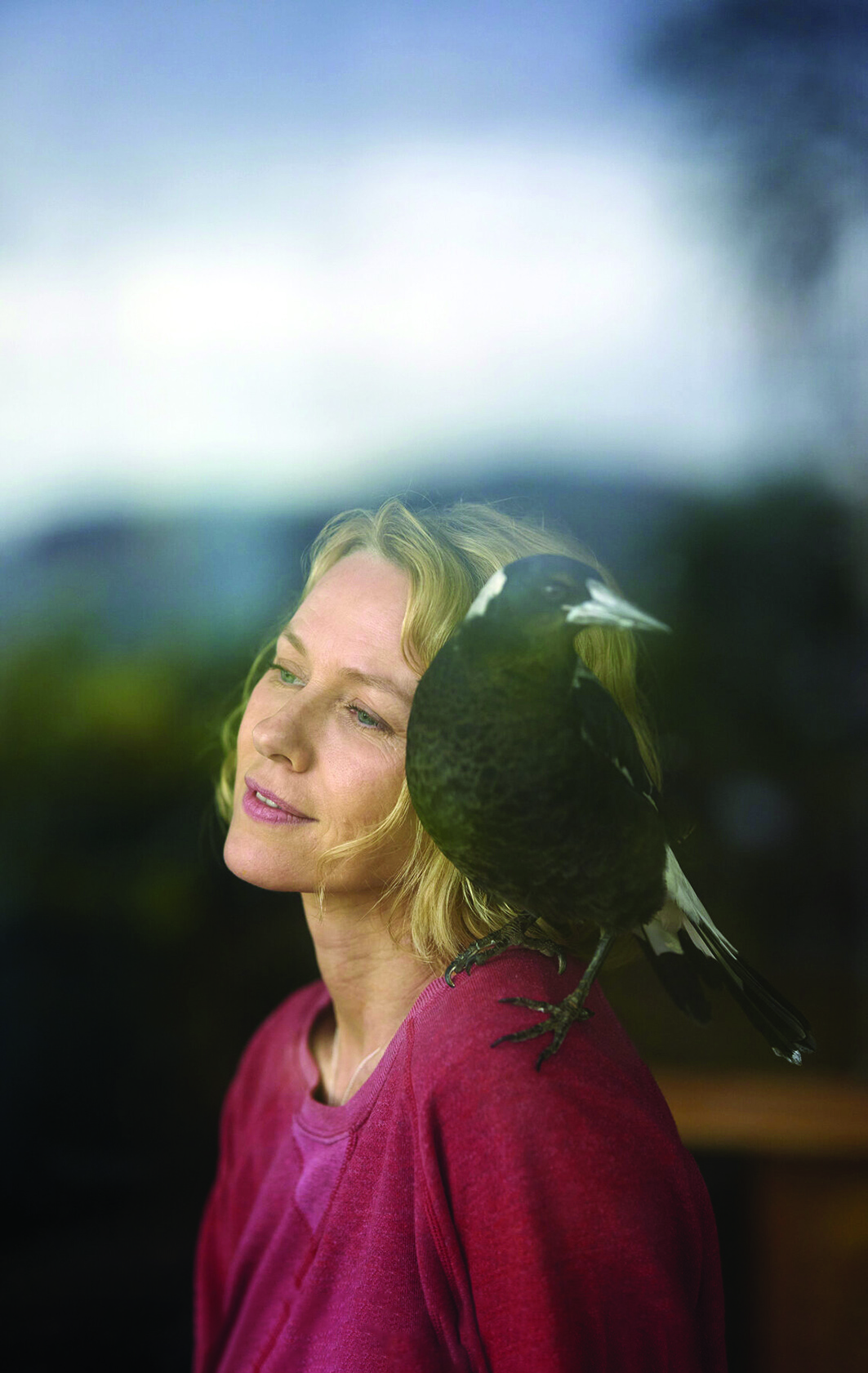Author’s note: This article describes the late 2020 diminution of government support for the local feature industry as an effective death sentence for the production of culturally relevant Australian films. In early April 2021, after this article was finalised for publication, a dramatic turn of events occurred: the government unexpectedly reversed its decision. Karl Quinn reported the news with a fitting film analogy: ‘The last-ditch mission to save the Australian film industry […] played [out] like a remake of The Dirty Dozen [Robert Aldrich, 1967], complete with a secret assault on the stronghold of power.’ [1]Karl Quinn, ‘Inside Story: How Bryan Brown and the Nationals Saved Australian Film’, The Sydney Morning Herald, 11 April 2021, <https://www.smh.com.au/culture/movies/inside-story-how-bryan-brown-and-the-nationals-saved-australian-film-20210411-p57iac.html>, accessed 5 May 2021. The lead characters in the drama were actor Bryan Brown and the deputy leader of the National Party, David Littleproud. Their weapon of choice: the argument that Australian features are a valuable cultural asset. As Littleproud said, ‘We believe in supporting local content because it is our national story and it should be preserved.’ [2]David Littleproud, quoted in ibid. He and Brown, among others, helped to prise the nail out of the proverbial coffin, giving local features the chance to see another day. Despite the government’s change of heart, however, all the complex impediments to a thriving local film industry – as outlined in the article – persist. Local films remain an endangered species.
‘The government just announced the death of Australian feature films.’[3]Steve Kearney, quoted in Don Groves, ‘Media Reforms: The “Death Knell” for Features or a Streaming-led Resurgence?’, IF.com.au, 2 October 2020, <https://www.if.com.au/media-reforms-the-death-knell-for-features-or-a-streaming-led-resurgence/>, accessed 5 February 2021. So said Steve Kearney, co-producer of Oddball (Stuart McDonald, 2015), in reaction to changes in the financing of features announced by the federal government in September 2020. The Producer Offset – a scheme crucial to the financing of all Australian features – was to be reduced from 40 per cent of the qualifying film budget to 30 per cent. Under the Offset, the government repays producers a portion of their feature film budget; this policy change meant that producers stood to lose 10 per cent of the finance they could previously rely on to cobble together the budget of a film. That reduction may not sound like a crippling impost, but given the massive problems already faced by producers in financing features, many saw no future for the industry. CEO of Screen Producers Australia (SPA) Matt Deaner warned the decrease meant the ‘end of the line’ for many feature films;[4]Don Groves, ‘Film and Documentary Producers Blast Media Reforms’, IF.com.au, 30 September 2020, <https://www.if.com.au/film-and-documentary-producers-blast-media-reforms/>, accessed 20 April 2021. Aidan O’Bryan, co-producer of Rams (Jeremy Sims, 2020), called it a potential ‘death knell’ for the sector;[5]Aidan O’Bryan, quoted in Karl Quinn & Zoe Samios, ‘“Death Knell”: Producers Say Screen Reforms Will Destroy Australian Film’, The Sydney Morning Herald, 30 September 2020, <https://www.smh.com.au/culture/tv-and-radio/netflix-broadcasters-praise-screen-reforms-film-producers-fear-the-worst-20200930-p560qf.html>, accessed 20 April 2021. and Robert Connolly, co-producer/director of The Dry (2020), urged the government not to ‘throw cinema under the bus’.[6]Robert Connolly, quoted in Garry Maddox, ‘In Their Moment of Triumph, There’s a Dark Cloud on the Horizon for Australian Films’, The Sydney Morning Herald, 6 February 2021, <https://www.smh.com.au/culture/movies/in-their-moment-of-triumph-there-s-a-dark-cloud-on-the-horizon-for-australian-films-20210204-p56zo4.html>, accessed 20 April 2021. Calling the reduction a ‘death sentence’, producer of The Dressmaker (Jocelyn Moorhouse, 2015) Sue Maslin concluded: ‘The curtain is set to close on 50 years of Australian movies on the big screen.’[7]Sue Maslin, quoted in Groves, ‘Media Reforms’, op. cit.
Why did the government choose to abandon the local feature industry in this way? Arts and communications minister Paul Fletcher initially dismissed the question, characterising the change to the Offset as a positive step forward in the bigger picture of where the industry was headed. The minister expressed a belief that ‘the explosion of streaming video services like Netflix, Disney+, Stan and Amazon Prime’[8]Paul Fletcher, quoted in ‘New Funding in Budget to Deliver Australian Screen Content’, media release, Minister for Communications, Urban Infrastructure, Cities and the Arts, 30 September 2020, <https://www.paulfletcher.com.au/media-releases/media-release-new-funding-in-budget-to-deliver-australian-screen-content>, accessed 5 February 2021. would create a future of opportunity for both film and television. This was evident in the decision to simultaneously increase the Offset for television production from 20 to 30 per cent (a plan that has been retained). The increase for television, Fletcher said, would allow for ‘higher production values and programs with a better prospect of being sold into the global content market’.[9]ibid. In setting their sights on a global, digital future for film as well as television, the government also removed the requirement that Australian feature films be released in cinemas. Under these proposed guidelines, eligible features could be released on subscription video-on-demand (SVOD) platforms, a subscription-television or free-to-air broadcaster, or a catch-up service – or theatrically. Like many producers, Maslin expressed doubts about the opportunities. The policy change, she said, would force producers to ‘focus on digital platforms in an unregulated environment where to date there has been no viable business model emerge for small to medium sized producers’.[10]Maslin, quoted in Groves, ‘Media Reforms’, op. cit. So far, international streaming services have shown little interest in picking up Australian content. In 2019, Netflix listed only seventeen Australian features in its catalogue of 4859 titles.[11]See RMIT University, ‘Australian Content in SVOD Catalogs: Availability and Discoverability’, 2019, p. 10, <https://apo.org.au/sites/default/files/resource-files/2019-10/apo-nid264821.pdf>, accessed 5 February 2021. Unless the government imposes Australian content regulation on streaming services – as many in the industry have been pushing for[12]See Miranda Ward, ‘“No Brainer”: Netflix Should Have to Invest in Aussie Content’, The Australian Financial Review, 18 April 2021, <https://www.afr.com/companies/media-and-marketing/no-brainer-netflix-should-have-to-invest-in-aussie-content-20210414-p57j3d>, accessed 31 May 2021. – they are unlikely to change their policy on local acquisition.

In recent years, many Australian feature producers have felt abandoned by the government. They are making films that express an Australian sensibility; their films tell local stories about local characters speaking in an Australian accent. Isn’t that what the Australian film industry is meant to be about? Doesn’t it exist so that our unique voice can be heard? The answer was, at one time, yes – but not anymore. The local/cultural rationale driving the industry’s renaissance in the 1970s has been overwhelmed by an international/commercial objective. This commercial agenda gained traction in the neoliberal 1990s, but it was in the 2000s that the creation of Screen Australia effectively terminated the (uneasy) balance that had existed between culture and commerce. With its new policies and programs, Screen Australia opted for an industry that was outward-looking – international and commercially oriented. The inevitable casualty of this policy reset has been Australian features of cultural significance, which have become marginalised and ever more difficult to produce. Denationalising policies, such as those announced by Fletcher in 2020, have continued this pattern.
The local/cultural rationale driving the industry’s renaissance in the 1970s has been overwhelmed by an international/commercial objective.
Despite acting to the contrary, the federal government and Screen Australia continue to refer to cultural relevance as the key reason for maintaining the industry. In announcing the Offset reduction, Fletcher said that ‘a vibrant local screen industry [is] essential to Australia’s cultural identity, while also supporting jobs and economic recovery following the COVID-19 pandemic’.[13]‘New Funding in Budget’, op. cit. Screen Australia’s vision statement trumpets cultural relevance even more loudly, claiming that the funding body exists ‘to inspire, inform and connect audiences with compelling Australian stories’, and that:
Australian screen content delivers tremendous cultural value to audiences: it informs our sense of who we are, offers unique forms of cultural expression and provides culturally relevant experiences shared by millions of Australians.[14]Screen Australia, ‘Corporate Plan 2020–2024’, July 2020, p. 3, <https://www.screenaustralia.gov.au/getmedia/bd7cf2de-1c31-44ed-a8bf-ac49bd2f89c2/Screen-Australia-Corporate-Plan-2020-2024.pdf>, accessed 5 February 2021.

All this is lip service, of course. In reality, not enough protection or support has been provided to feature producers whose films embody these cultural goals to allow them to survive, let alone thrive. The extent of Screen Australia’s role in turning the industry outward rather than inward can be seen in the range of policies and programs it has introduced, stretching from script development through production to distribution.
Screen Australia was established in 2008 with a mandate to transform Australia’s film landscape from a cottage industry relying on continuous government funding into a ‘real’ industry. Production companies would upsize and become financially sustainable, and the level of production would be upscaled to create bigger-budget films with commercial appeal. Prior to the creation of Screen Australia, the development of features had been handled by the Australian Film Commission (AFC), where script-development executives saw their role as – in the words of former development executive Claire Dobbin – ‘[supporting] filmmakers who were making a contribution to national culture’.[15]Claire Dobbin, interview with author, 4 April 2015. Screen Australia’s new broom swept in a very different direction. Its aim was, as stated by former AFC and Screen Australia development executive Veronica Gleeson, to produce scripts that could ‘consistently flow into the marketplace, be financed, sustain businesses’.[16]Veronica Gleeson, interview with author, 16 June 2014.
The agency pursued a three-pronged approach to achieve this. First, they tended to promote genre films – such as thrillers, crime films and romantic comedies – over the smaller-scale ‘dramas’ (usually character-focused stories) that had been strongly supported by the AFC. Hollywood narrative conventions (such as the three-act structure or ‘hero’s journey’ narrative) were pushed as the best mode for telling screen stories. Lastly, ‘crossover’ narratives – films with international as well as local appeal – were highlighted as the kinds of stories writers should focus on. Given the degree to which Australian producers and writers depend on screen agencies to fund script development, it was not surprising to see a quick turnaround in the types of scripts being written. In 2008, ‘dramas’ comprised 60 per cent of the AFC slate; by 2012, this had dropped to 40 per cent, and the remaining 60 per cent was composed of ‘thrillers, crime films, romantic comedies and others’.[17]Anne Richey, ‘Screen Australia: Increasing Focus on Emerging Producers with New Funding Tool’, screenhub, 3 August 2012, <https://www.screenhub.com.au/news-article/features/film/anne-richey/screen-australia-increasing-focus-on-emerging-producers-with-new-funding-tool-238021>, accessed 1 June 2021.

The features listed in the 2020 AACTA Awards provide a snapshot of how Screen Australia’s policies have played out. Genre was a dominant characteristic in the thirty-five films entered – twelve of the titles, or over one-third, were either horror films or thrillers alone. But it turns out that Screen Australia’s energetic advocacy of genre, which was intended to make Australian films more popular and profitable, has not been successful in the domestic market. For instance, Bait (Kimble Rendall, 2012), a horror/disaster movie about shoppers being hunted by great white sharks, took US$32 million at the foreign box office but just A$1 million domestically. Similarly, the sci-fi/action/horror film Daybreakers (Michael & Peter Spierig, 2009) and the 3D action thriller Sanctum (Alister Grierson, 2011) took USD$54 million and USD$108 million respectively overseas, but only A$2 million and A$3 million locally. Screen Australia CEO Graeme Mason acknowledged in 2015 that horror, thrillers and sci-fi tend to fail at the Australian box office but succeed internationally. He continued: ‘Genre does not work theatrically in this country; it never has.’[18]Graeme Mason, quoted in Karl Quinn, ‘Australian Film Has Had Its Biggest Year at the Box Office Ever. Why?’, The Sydney Morning Herald, 5 December 2015, <https://www.smh.com.au/entertainment/movies/australian-film-has-had-its-biggest-year-at-the-box-office-ever-why-20151204-glfut3.html>, accessed 5 February 2021. Seph McKenna, head of Australian production for Roadshow Films between 2006 and 2017, agrees with Mason: Australian audiences are not interested in genre;[19]As related by Seph McKenna, interview with author, 14 May 2014. rather, he says, they want films with cultural resonance – films that are ‘an exploration and affirmation of the values that make us content, that fit our aspirations and make our world go round’.[20]Seph McKenna, ‘The Secret Ingredient for Screen Success? Genuinely Australian Values’, screenhub, 3 October 2019, <https://www.screenhub.com.au/news-article/opinions-and-analysis/policy/seph-mckenna/the-secret-ingredient-for-screen-success-genuinely-australian-values-258935>, accessed 5 February 2021. Films that closely follow horror or thriller genre tropes can be set anywhere. Their focus is unlikely to be ‘cultural resonance’, even if they are reaching a wider digital audience today.
Screen Australia’s energetic advocacy of genre, which was intended to make Australian films more popular and profitable, has not been successful in the domestic market.
Screen Australia’s advocacy of ‘crossover’ films is also playing out in the AACTA Awards. Thirteen of the thirty-five nominated films in 2020 had international cast members and/or some form of international content. This ranged from films with no observable Australian content or accents – Escape from Pretoria (Francis Annan, 2020), The Invisible Man (Leigh Whannell, 2020), Bloody Hell (Grierson, 2020) and A Boy Called Sailboat (Cameron Nugent, 2018) – to Australian films that featured one or more international actors, such as Dirt Music (Gregor Jordan, 2019), Little Monsters (Abe Forsythe, 2019), Rams and Relic (Natalie Erika James, 2020). Producers are often compelled to ‘internationalise’ their Australian film in some way, whether they wish to or not. Employing cast with international appeal or having international elements in the narrative makes the films more attractive in the overseas marketplace, where producers must go to attract investment finance to complete their budgets. A purely local film with a local cast is highly unlikely to make the cut.

The viability of culturally resonant Australian features has become particularly concerning since the digital revolution disrupted the established business models and revenue streams that underpinned the feature film sector. In 2016, Screen Australia predicted the eventual demise of mid-budget (A$4–8 million) Australian films due to the difficulty of raising finance.[21]See ‘Screen Aus and Film Vic in Conversation (25th October)’, Vimeo, 15 November 2016, <https://vimeo.com/191697662>, accessed 5 February 2021. This was a startling claim, given the majority of culturally relevant Australian films fall into this budget range. Screen Australia’s CEO, head of production, and head of business and audience all concurred that, in the future, the market would only tolerate low-budget features (traditionally around A$1 million) or high-budget films that could buy international stars and appeal to overseas audiences.[22]ibid.
In 2018, SPA organised a policy forum on feature films that asked the difficult question: do they have a future? At the forum, Maslin cited a Deloitte survey commissioned by SPA that found that feature-film production businesses are among the least sustainable.[23]Don Groves, ‘Sue Maslin Asks: Is There a Future for Australian Feature Films?’, IF.com.au, 17 July 2018, <https://www.if.com.au/sue-maslin-asks-is-there-a-future-for-australian-feature-films/>, accessed 5 February 2021. With falling cinema attendances, a shrinkage of screens available for Australian films, low box-office returns, falling ancillary revenues (such as DVD sales) and SVOD platforms dominating the market, Maslin believed intervention by Screen Australia was crucial. She called for the agency to persuade the federal government of the need for a feature-film fund to provide non-recoupable loans for producers’ marketing expenses, both in the financing and distribution stages. She also called for greater investment in development, seeing as how many small-to-medium production companies receive no direct financial support from Screen Australia and therefore often go heavily into debt during the development phase: ‘Every successful Australian film you can think of did not arise because a committee sat around deciding to play it safe. The Australian film industry needs champions right now.’[24]Sue Maslin, quoted in Groves, ibid. It appears that neither the federal government nor its funding agency have risen to the challenge.

Screen Australia’s plan for production and distribution – to upsize the industry and integrate it into the international marketplace – has been very successful. The chief beneficiaries of the Producer Offset have been large-scale Australian production companies like See-Saw Films. See-Saw produces high-budget films such as Mary Magdalene (Garth Davis, 2018), Widows (Steve McQueen, 2018) and Ammonite (Francis Lee, 2020), and operates with the advantage of economies of scale and strong overseas links.[25]See Screen Australia, ‘Skin in the Game: The Producer Offset 10 Years On’, November 2017, <https://www.screenaustralia.gov.au/getmedia/cbd7dfc8-50e7-498a-af30-2db89c6b3f30/Skin-in-the-game-producer-offset.pdf>; and Commonwealth of Australia, ‘Supporting Australian Stories on Our Screen – Options Paper’, 2020, <https://www.communications.gov.au/have-your-say/supporting-australian-stories-our-screens-options-paper>, both accessed 5 February 2021. Meanwhile, smaller Australian producers, under intense pressure to complete their budgets, invest their fees and overheads in a film and later reclaim them through the Offset, or else trade off some of their equity in securing private investors, cast and so on (the Offset gives feature producers a share of the profits pari passu to the cash rebate). While the low-to-medium-budget films most likely to express Australian sensibilities fail to benefit from the Offset, at the opposite end of the spectrum, the Offset policy has achieved another of its goals: stimulating the production and dissemination of large-scale international–Australian features. A new, broader definition of Australian film introduced by Screen Australia allows high-budget internationally financed films like The Lego Movie (Christopher Miller & Phil Lord, 2014), I, Frankenstein (Stuart Beattie, 2014) and Hacksaw Ridge (Mel Gibson, 2016) to receive the Producer Offset. Projects that are 100 per cent foreign financed are still eligible, provided they are under Australian creative control.
Two additional offsets were set up in 2008 to entice overseas features to be filmed or post-produced here: the Location and the PDV (post, digital and visual effects) Offsets. These programs have incentivised a vast service industry for international productions, which in 2019 accounted for one-third of all drama and television production in Australia.[26]‘Drama Report 2018/19: Spend on Australian Titles Hits All-time High’, media release, Screen Australia,2020, <https://www.screenaustralia.gov.au/sa/media-centre/news/2019/10-31-drama-report-2018-19-australian-titles>, accessed 5 February 2021. This service industry represents thousands of jobs and supports a web of ancillary industries (like hospitality), which satisfies the government’s ‘commercial value’ test for the industry. The result has been a shift in the government’s focus to attracting headline-grabbing offshore productions to Australia, thereby growing our share of global production. Concomitant to this has been a decline in interest in the local industry. This was graphically illustrated in 2016 when the government took A$35 million from Screen Australia’s budget to boost location incentives, ensuring Alien: Covenant (Ridley Scott, 2017) and Thor: Ragnarok (Taika Waititi, 2017) would be filmed here.[27]See Bridget Brennan, ‘MYEFO: Arts Sector “Horrified” by Cuts to Screen Australia, Literary Council’, ABC News, 16 December 2015, <https://www.abc.net.au/news/2015-12-16/myefo-government-slashes-50-million-from-arts-sector/7033296>, accessed 5 February 2021.

In announcing the reduction in the Producer Offset for features last September, Fletcher provided some additional funding to the local industry. A$30 million will go to Screen Australia over two years to fund Australian drama, documentary and children’s screen content across film and television, though it is important to note that this sum simply restores Screen Australia’s funding to pre-2014 levels. An extra A$3 million over three years will also be given to Screen Australia to support a new Screen Writing and Script Development Fund. Mason explained that the fund is for scripts that are focused globally: ‘I think a challenge for us at the moment is a lot of our stuff is good, but not great for an international buyer.’[28]Graeme Mason, quoted in David Tiley, ‘The Devil Is in the Detail on Government Changes. Some Sulphur, Some Smiles’, screenhub, 2 October 2020, <https://www.screenhub.com.au/news-article/news/policy/david-tiley/the-devil-is-in-the-detail-on-government-changes-some-sulphur-some-smiles-261205>, accessed 5 February 2021. One could ask whether our ‘stuff’ fails because it is ‘too Australian’ – or has the three-act / ‘hero’s journey’ structure not been followed closely enough?
While the future seems grim, perhaps a glimmer of hope lies in Australian audiences. In late 2020 and early 2021, despite the decline in cinema takings due to COVID-19, a number of local films did extremely well at the box office. The Dry, Penguin Bloom (Glendyn Ivin, 2020), Rams and High Ground (Stephen Maxwell Johnson, 2021) earned A$28.5 million, A$7.4 million, A$3.6 million and A$3.1 million respectively. Perhaps it will be local audiences, not the government or Screen Australia, that keep the Australian feature industry alive – that is, if producers can find some way to finance local films into production. Roadshow Films (the distributor of The Dry, Penguin Bloom and Rams) chief executive Joel Pearlman expressed concern over the ‘dark cloud on the horizon’ represented by the winding back of the Producer Offset.[29]Maddox, op. cit. That imminent threat may have passed, but clouds remain – and the result is more likely to be a cyclone than a shower.
This article has been refereed.
Endnotes
| 1 | Karl Quinn, ‘Inside Story: How Bryan Brown and the Nationals Saved Australian Film’, The Sydney Morning Herald, 11 April 2021, <https://www.smh.com.au/culture/movies/inside-story-how-bryan-brown-and-the-nationals-saved-australian-film-20210411-p57iac.html>, accessed 5 May 2021. |
|---|---|
| 2 | David Littleproud, quoted in ibid. |
| 3 | Steve Kearney, quoted in Don Groves, ‘Media Reforms: The “Death Knell” for Features or a Streaming-led Resurgence?’, IF.com.au, 2 October 2020, <https://www.if.com.au/media-reforms-the-death-knell-for-features-or-a-streaming-led-resurgence/>, accessed 5 February 2021. |
| 4 | Don Groves, ‘Film and Documentary Producers Blast Media Reforms’, IF.com.au, 30 September 2020, <https://www.if.com.au/film-and-documentary-producers-blast-media-reforms/>, accessed 20 April 2021. |
| 5 | Aidan O’Bryan, quoted in Karl Quinn & Zoe Samios, ‘“Death Knell”: Producers Say Screen Reforms Will Destroy Australian Film’, The Sydney Morning Herald, 30 September 2020, <https://www.smh.com.au/culture/tv-and-radio/netflix-broadcasters-praise-screen-reforms-film-producers-fear-the-worst-20200930-p560qf.html>, accessed 20 April 2021. |
| 6 | Robert Connolly, quoted in Garry Maddox, ‘In Their Moment of Triumph, There’s a Dark Cloud on the Horizon for Australian Films’, The Sydney Morning Herald, 6 February 2021, <https://www.smh.com.au/culture/movies/in-their-moment-of-triumph-there-s-a-dark-cloud-on-the-horizon-for-australian-films-20210204-p56zo4.html>, accessed 20 April 2021. |
| 7 | Sue Maslin, quoted in Groves, ‘Media Reforms’, op. cit. |
| 8 | Paul Fletcher, quoted in ‘New Funding in Budget to Deliver Australian Screen Content’, media release, Minister for Communications, Urban Infrastructure, Cities and the Arts, 30 September 2020, <https://www.paulfletcher.com.au/media-releases/media-release-new-funding-in-budget-to-deliver-australian-screen-content>, accessed 5 February 2021. |
| 9 | ibid. |
| 10 | Maslin, quoted in Groves, ‘Media Reforms’, op. cit. |
| 11 | See RMIT University, ‘Australian Content in SVOD Catalogs: Availability and Discoverability’, 2019, p. 10, <https://apo.org.au/sites/default/files/resource-files/2019-10/apo-nid264821.pdf>, accessed 5 February 2021. |
| 12 | See Miranda Ward, ‘“No Brainer”: Netflix Should Have to Invest in Aussie Content’, The Australian Financial Review, 18 April 2021, <https://www.afr.com/companies/media-and-marketing/no-brainer-netflix-should-have-to-invest-in-aussie-content-20210414-p57j3d>, accessed 31 May 2021. |
| 13 | ‘New Funding in Budget’, op. cit. |
| 14 | Screen Australia, ‘Corporate Plan 2020–2024’, July 2020, p. 3, <https://www.screenaustralia.gov.au/getmedia/bd7cf2de-1c31-44ed-a8bf-ac49bd2f89c2/Screen-Australia-Corporate-Plan-2020-2024.pdf>, accessed 5 February 2021. |
| 15 | Claire Dobbin, interview with author, 4 April 2015. |
| 16 | Veronica Gleeson, interview with author, 16 June 2014. |
| 17 | Anne Richey, ‘Screen Australia: Increasing Focus on Emerging Producers with New Funding Tool’, screenhub, 3 August 2012, <https://www.screenhub.com.au/news-article/features/film/anne-richey/screen-australia-increasing-focus-on-emerging-producers-with-new-funding-tool-238021>, accessed 1 June 2021. |
| 18 | Graeme Mason, quoted in Karl Quinn, ‘Australian Film Has Had Its Biggest Year at the Box Office Ever. Why?’, The Sydney Morning Herald, 5 December 2015, <https://www.smh.com.au/entertainment/movies/australian-film-has-had-its-biggest-year-at-the-box-office-ever-why-20151204-glfut3.html>, accessed 5 February 2021. |
| 19 | As related by Seph McKenna, interview with author, 14 May 2014. |
| 20 | Seph McKenna, ‘The Secret Ingredient for Screen Success? Genuinely Australian Values’, screenhub, 3 October 2019, <https://www.screenhub.com.au/news-article/opinions-and-analysis/policy/seph-mckenna/the-secret-ingredient-for-screen-success-genuinely-australian-values-258935>, accessed 5 February 2021. |
| 21 | See ‘Screen Aus and Film Vic in Conversation (25th October)’, Vimeo, 15 November 2016, <https://vimeo.com/191697662>, accessed 5 February 2021. |
| 22 | ibid. |
| 23 | Don Groves, ‘Sue Maslin Asks: Is There a Future for Australian Feature Films?’, IF.com.au, 17 July 2018, <https://www.if.com.au/sue-maslin-asks-is-there-a-future-for-australian-feature-films/>, accessed 5 February 2021. |
| 24 | Sue Maslin, quoted in Groves, ibid. |
| 25 | See Screen Australia, ‘Skin in the Game: The Producer Offset 10 Years On’, November 2017, <https://www.screenaustralia.gov.au/getmedia/cbd7dfc8-50e7-498a-af30-2db89c6b3f30/Skin-in-the-game-producer-offset.pdf>; and Commonwealth of Australia, ‘Supporting Australian Stories on Our Screen – Options Paper’, 2020, <https://www.communications.gov.au/have-your-say/supporting-australian-stories-our-screens-options-paper>, both accessed 5 February 2021. |
| 26 | ‘Drama Report 2018/19: Spend on Australian Titles Hits All-time High’, media release, Screen Australia,2020, <https://www.screenaustralia.gov.au/sa/media-centre/news/2019/10-31-drama-report-2018-19-australian-titles>, accessed 5 February 2021. |
| 27 | See Bridget Brennan, ‘MYEFO: Arts Sector “Horrified” by Cuts to Screen Australia, Literary Council’, ABC News, 16 December 2015, <https://www.abc.net.au/news/2015-12-16/myefo-government-slashes-50-million-from-arts-sector/7033296>, accessed 5 February 2021. |
| 28 | Graeme Mason, quoted in David Tiley, ‘The Devil Is in the Detail on Government Changes. Some Sulphur, Some Smiles’, screenhub, 2 October 2020, <https://www.screenhub.com.au/news-article/news/policy/david-tiley/the-devil-is-in-the-detail-on-government-changes-some-sulphur-some-smiles-261205>, accessed 5 February 2021. |
| 29 | Maddox, op. cit. |





